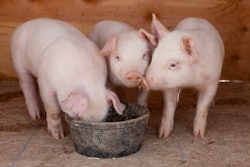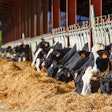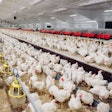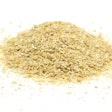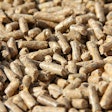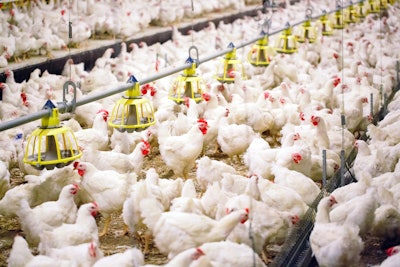
One emerging but hardly acknowledged solution in enhancing breast meat quality in broilers is the use of guanidinoacetic acid (GAA). Perhaps this is because its name is too difficult to remember, or because there has not been enough marketing awareness. Nevertheless, here we will explore what is already known about GAA and identify possible knowledge gaps.
Guanidinoacetic acid, also known as glycocyamine, is a naturally occurring compound found in the body of animals, including poultry. It is a precursor to well-known creatine, a compound essential for muscle growth and energy metabolism. Here is, then, how GAA can affect muscle quality in broilers.
1. Enhanced muscle growth
One of the primary effects of GAA in broilers, according to some research papers, is its ability to enhance muscle growth. GAA supplementation in broiler diets has been shown to increase muscle mass, particularly in breast meat, which is considered a premium cut in some markets.
2. Improved meat yield
Naturally, the increased muscle growth rate associated with GAA supplementation leads to improved meat yield in broilers – assuming market age is not reduced. As a result, broilers that receive GAA in their diets tend to have larger and meatier breast muscles.
3. Increased meat tenderness
Meat tenderness is a critical factor in determining the quality of broiler breast meat. Tough or chewy meat can deter consumers, leading to decreased sales and customer satisfaction. GAA has been found to enhance meat tenderness by affecting the structural properties of muscle fibers.
4. Reduced drip loss
Drip loss is another important aspect of meat quality. High drip loss can lead to reduced product shelf life and decreased economic value. Some studies have shown that GAA supplementation can help reduce drip loss in broiler breast meat. However, this needs further verification.
5. Improved color and appearance
The color and appearance of meat are crucial factors that influence consumer purchasing decisions. In some cases, GAA has been found to positively affect the color and appearance of broiler breast meat. Again, this is very subjective and depends largely on local market preferences.
6. Reduced incidence of woody breast meat
Previous research has shown that wooden breast was manifested by low creatine and high ultimate pH, especially in heavy birds. In recent studies, it was seen that GAA supplementation increased muscle glycogen, reduced the ultimate pH, and reduced the incidence of wooden breast severity. This is an exciting possibility for a difficult problem, but it requires further verification.
In contrast, while the use of GAA in broiler diets shows promising results in enhancing breast meat quality, there are some challenges and considerations to keep in mind:
1. Cost: GAA supplements can be relatively expensive, but this might change if used more widely or as a supplement against myopathies such as wooden breast meat.
2. Regulations: Regulatory approval for GAA use in poultry production will vary by region. Producers should ensure compliance with local regulations when incorporating GAA into broiler diets.
3. Research gaps: As discussed, while existing research demonstrates positive effects, further studies are needed to verify in practice and fully understand any long-term impacts of GAA supplementation.




